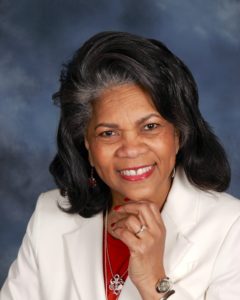
Life is a Great ADVENT-ure!
The word “Advent” is Latin for “arrival;” the expectation for the coming into our consciousness of our divine potential, our Christ-self. A spinoff of that word is “Adventure,” which according to the English dictionary is a noun and a verb. As a noun, it means a wild and exciting undertaking. As a verb, it means to take a risk in the hope of a favorable outcome. We did not celebrate Advent in the Baptist church of my upbringing. I was first introduced to it as a newbie to Unity in my early twenties. I thought the decorations were beautiful—the green wreath with surrounding four candles equally placed around the center and a single candle in the middle. More than a pretty centerpiece, these decorations represent the coming celebration of the birth of a greater consciousness—a new way of being. Each item stands for an aspect of our spiritual evolution. The circular Advent wreath symbolizes everlasting life and unending love. The candles represent hope and faith, peace, love, and joy—the real meaning of Christmas. The first Advent took place in the fourth or fifth centuries as a time set aside by the new Christians for prayer and fasting. The first Advent wreath appeared in 1839, fashioned from a wheel cart with twenty small red and white candles inside. The red candles were lit on weekdays and the white ones on each Sunday up to Christmas as a way for children to count down the days until that long-awaited event. The evergreen wreath, which represents faith, eventually replaced the wheel and the number of candles were reduced to four or five. The four outer candles represent the theme for each of the Sundays before Christmas. The colors may vary; some choose purple and others blue, both of which symbolize royalty. In the Unity tradition, the candles symbolize a rebirth in us of hope and faith, peace, love, and joy. The first candle symbolizes hope and faith, a way to prepare our minds for what we expect to give birth to in consciousness. The second candle represents peace for the angels who announced the coming of the Christ child. The third candle represents love as a symbol of the greatest gift we can give ourselves and the world. The fourth candle stands for joy; the joy that the shepherds felt when they learned of the coming of the Messiah. The fifth candle, called the ‘Christ Candle’, is lit on Christmas Day to represent the light that has come into the world and is born again in us. When we think of the Virgin Mary being pregnant with child, we might consider that to mean that she was “expecting” something wonderful to be born in her and into the world.
The Advent season offers us the same opportunity—to expect something greater than ourselves or our wildest imaginings is about to occur. As Rev. Robert Brummet defines it, it is the birth of a greater reality. Something new is unfolding in us. To experience it, we must prepare the way. We must wait, watch, and listen for the greater good that we are giving birth to.
Life is an ADVENT-ure!
Wishing you hope, faith, peace, love, and joy during this season of advent and for the remainder of your life’s unfoldment!
If Every Day Were Christmas
by James Dillet Freeman
If every day were Christmas, how different life would be,
If not one day but all the year were ruled by charity.
Had we the faith in miracles a child has Christmas morn,
Each day would be love’s manger and Christ would be reborn
In us again to change and heal our outworn wars and ways—
Had we a child’s or shepherd’s gift for wonderment and praise!
Yet every day Is Christmas when we learned to live by love’s law,
Learned not how to get but only how to give;
And like a child can wonder and like a child can pray,
But have the grown-up wisdom to give ourselves away.
James Dillet Freeman (1912-2003) was the Unity poet laureate. He wrote the “Prayer for Protection” and the poem “I Am There,” both taken to the moon by Apollo astronauts.
